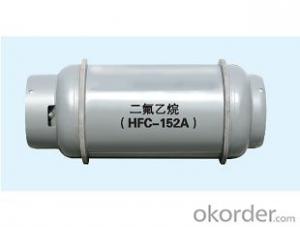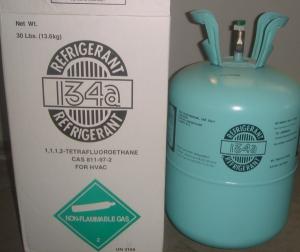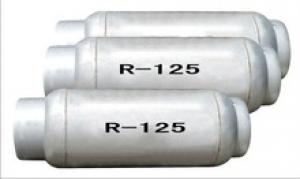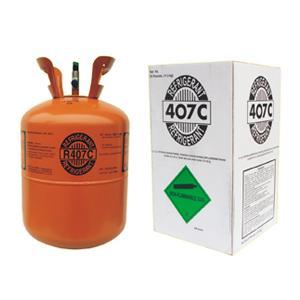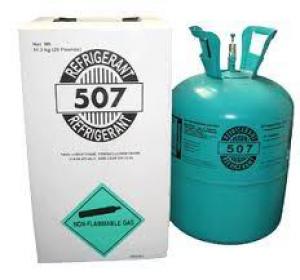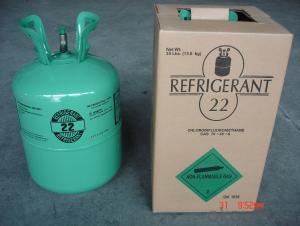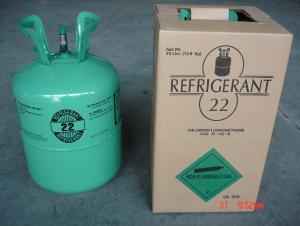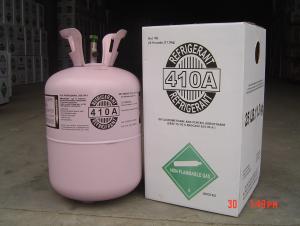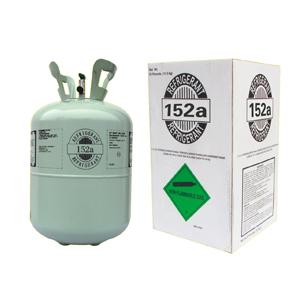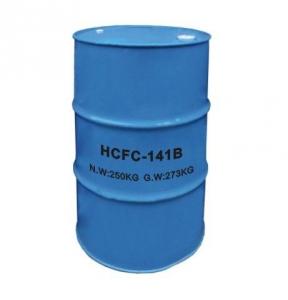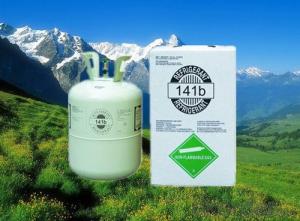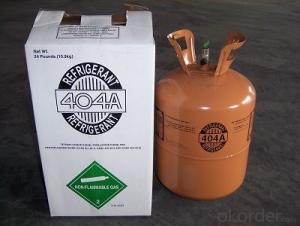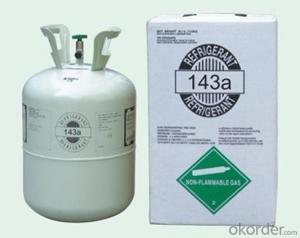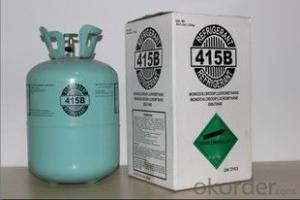Aerosol Agent R152a
- Loading Port:
- Shanghai
- Payment Terms:
- TT OR LC
- Min Order Qty:
- -
- Supply Capability:
- 1000MT m.t./month
OKorder Service Pledge
OKorder Financial Service
You Might Also Like
1.Properties and Applications:
is a colorless liquefied gas.It dissolves in oil easily but not in water. It is mainly used as refrigerant,aerosol,foamming agent and raw material of HCFC-142b.
2.Physical and Chemical Properties:
Chemical formula:CH3-CHF2
Molecular weight:66.05
Boiling point,°c:-24.7
Critical temperature,°c:113.5
Critical pressure,KPa:4.58
Vapor pressure(absolute pressure),21.1°c,Mpa:0.51
Liquid density,g/cm3:0.9
Vaporization heat(b.p)(KJ/kg):324.2
3.Quality Specification:
Purity,%:99.8
Mosisture ,ppm:10
Acidity,ppm:0.1
Evaporating Residue,ppm:100
Appearance:colorless,not turbid
Odor:no strange stench
Refrigerant R152a
| Product: | R152A | ||||||||||||||
| Property of chloride : |
| ||||||||||||||
| Packing | Recyclable cylinder 400L,800L(>=3.01mpa),926L,ISO-Tank | ||||||||||||||
| |||||||||||||||
| Quality standard : |
| ||||||||||||||
Application: | Usede as Refrigerant,foamer,aerosol and cleanser | ||||||||||||||
- Q: What is organic matter?
- Organic compounds (organic compounds) mainly by the oxygen elements, hydrogen, carbon elements. Organic matter is the material basis for life. Fat, amino acids, protein, sugar, heme, chlorophyll, enzymes, hormones and so on. Biological metabolism and biological genetic phenomena, are related to the transformation of organic compounds. In addition, many substances closely related to human life, such as oil, natural gas, cotton, dyes, chemical fiber, natural and synthetic drugs, are organic compounds.
- Q: Chemical life network: chemical (inorganic reaction, organic reaction) is equal to the life of life reaction?
- Organic chemistry is the study of the origin of organic compounds, preparation, structure, properties, applications and related theories of science, also known as carbon compounds.
- Q: What is the hydrocarbon thing
- Hydrocarbons can be divided into: open chain hydrocarbons (carbon atoms in hydrocarbon molecules in open chain) - saturated hydrocarbons - alkanes - unsaturated hydrocarbons - olefins and polyolefins (carbon - carbon double bonds, unstable) - alkynes and (Cyclopentane) - cycloalkene - cycloalkyne aromatic hydrocarbon - monocyclic aromatic hydrocarbon (benzene and its homologues) - fused ring aromatic hydrocarbons (Polycyclic aromatic hydrocarbons and their homologues) - polycyclic aromatic hydrocarbons (naphthalene, anthracene and other condensed ring aromatic hydrocarbons and their homologues) all hydrocarbons are hydrophobic, that all the hydrocarbons are not soluble in water and coal The main ingredients are hydrocarbons
- Q: Are all carbon compounds all organic?
- Of course not Like carbon monoxide is not friends ~ ~ ~ In general, organic matter will contain at least two elements of carbon and hydrogen, but carbon tetrachloride is an exception. Many of the concepts in chemistry, or else there is a special case, or that is limited, can only control the total but can not control the whole. It is very annoying thing oh ~ ~ ~
- Q: Does Organic Chemistry Study the Performance of Hydrocarbons and Their Derivatives?
- Also study the structure and transformation
- Q: Cracked
- It is almost impossible for this problem to look at your reaction conditions. Generally speaking, the alkane reaction is mainly difficult to decompose directly into ions
- Q: Is acrylamide an oxygen-containing derivative of hydrocarbons?
- From the structural point of view, alcohol, vinegar, malic acid, citric acid and other organic matter, can be seen as hydrocarbon molecules in the hydrogen atoms are replaced by oxygen atoms and atomic groups, they are known as hydrocarbon oxygen derivatives.
- Q: Peracetic acid is not
- A series of compounds produced by the substitution of hydrogen atoms in other molecular or atomic groups as hydrocarbon derivatives, peroxyacetic acid is CH3COOOH, and should be considered
- Q: What is the most primitive person on earth?
- These macromolecules are not in the modern sense of the protein and nucleic acid polymer, but a variety of amino acids, nucleosides, phosphoric acid, carbohydrates and some other small molecules of the disorder of the polymer, when the nucleoside and phosphoric acid composition of nucleoside Acid, and gradually form a nucleotide chain, the formation of these nucleotide chain of the amino acid on the formation of the field of binding force, and then assembled peptide chain. Or by the combination of a variety of amino acids into peptide chain formed by the force field on the surrounding nucleus formation field binding effect, and then assembled the nucleotide chain, with the formation of peptide chain and nucleotide chain longer and longer , The molecular weight is growing, and ultimately the formation of nucleic acids and proteins, nucleic acid and protein formation is the product of interaction with each other, is generated at the same time.
- Q: NH4HCO3 and so have C atoms ah, why still inorganic
- Not all carbon compounds are organic compounds, CO, CO2, carbonic acid, carbonates (including salt and acid salts), metal carbides, cyanides, thiocyanates are inorganic compounds.
Send your message to us
Aerosol Agent R152a
- Loading Port:
- Shanghai
- Payment Terms:
- TT OR LC
- Min Order Qty:
- -
- Supply Capability:
- 1000MT m.t./month
OKorder Service Pledge
OKorder Financial Service
Similar products
Hot products
Hot Searches
